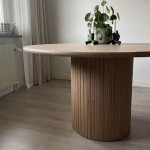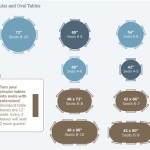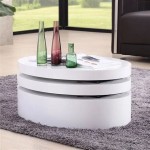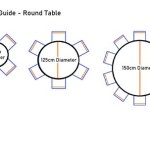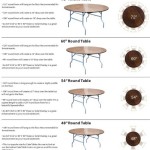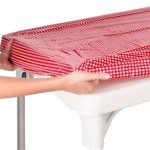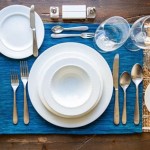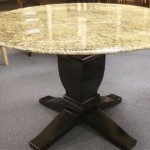How Big Does a Table Need to Be to Seat 12?
Determining the appropriate table size to comfortably accommodate 12 individuals requires consideration of several factors. These factors extend beyond simply fitting the chairs around the perimeter; they encompass individual space, serving dish placement, and overall guest comfort. A rushed estimation can lead to a cramped dining experience, negatively impacting the ambiance of any gathering. Conversely, an excessively large table can create a distant and impersonal atmosphere. Therefore, understanding the nuances of table sizing is crucial for successful event planning and interior design.
This article will explore the key considerations for selecting the ideal table size to seat 12 people. The focus will be on common table shapes, minimum space requirements per person, and the impact of additional elements like centerpieces and serving areas. Furthermore, the document will discuss how to adapt these guidelines based on the specific occasion and the type of dining experience desired.
Minimum Space Requirements Per Person
The foundation of determining table size lies in understanding the minimum space each guest requires. A general rule of thumb suggests allocating at least 24 inches (61 cm) of linear space per person along the table's perimeter. This allows adequate room for each diner to eat comfortably without bumping elbows with their neighbors. This 24-inch guideline accounts for the width of a typical dining chair and a sufficient personal space zone. Insufficient space may lead to discomfort and hinder conversation. While this serves as a starting point, it’s important to acknowledge that individual needs might vary. Some individuals may require a bit more space, especially if they are larger in stature.
Beyond the 24-inch rule, table depth (or width, depending on orientation) also plays a crucial role. A table should be deep enough to accommodate place settings, serving dishes (if placed on the table), and potentially a centerpiece. A minimum depth of 36 inches (91 cm) is usually recommended for a table seating 12. This depth allows for a comfortable arrangement of items and prevents a cluttered appearance. Tables deeper than 48 inches (122 cm) are generally considered luxurious and offer ample space. Larger tables, however, might make it difficult for guests to reach items in the center, potentially requiring passing and stretching, disrupting the flow of the meal.
Therefore, when planning for 12 individuals, multiply the minimum space per person by the number of people. For example, a rectangular table needs to be at least 24 inches * 6 individuals on one side which equals 144 inches (366 cm) long, and a minimum of 36 inches wide. These figures serve as minimums; adding extra space improves comfort and enhances the overall dining experience.
Considerations for Different Table Shapes
The shape of the table significantly affects the space required and the dynamics of the dining experience. Rectangular, oval, round, and square tables each present unique advantages and disadvantages when seating 12 individuals. Selecting the optimal shape involves a careful assessment of the available space and the intended atmosphere.
Rectangular Tables: Rectangular tables are a common choice due to their versatility and efficiency in maximizing seating capacity in rectangular rooms. To comfortably seat 12 people, a rectangular table should be at least 10 to 12 feet long (120-144 inches or 305-366 cm) and 36 to 48 inches (91-122 cm) wide. This size allows for six people to be seated on each side with adequate personal space. Rectangular tables are well-suited for formal dining and create a sense of structure and symmetry. However, they can make conversation across the table challenging, as individuals are seated further apart.
Oval Tables: Oval tables offer a similar seating capacity to rectangular tables but with a softer, more elegant aesthetic. The rounded ends allow for easier conversation among all guests. An oval table seating 12 should be approximately 10 to 12 feet long (120-144 inches or 305-366 cm) and 4 to 5 feet wide (48-60 inches or 122-152 cm) at its widest point. The increased width is sometimes necessary to maintain sufficient space for place settings and serving dishes, especially at the curved ends.
Round Tables: Round tables promote a more intimate and inclusive dining experience. All guests are equidistant from one another, facilitating conversation and creating a sense of unity. For 12 people, a round table needs to be quite large, typically around 72 to 84 inches (183-213 cm) in diameter. Smaller round tables might feel cramped, while excessively large ones can create a feeling of distance. When opting for a round table, ensure that the room is spacious enough to accommodate the table without hindering movement around it. One drawback to round tables is the potential difficulty in placing serving dishes within easy reach of all guests. Lazy Susans or buffet-style serving arrangements are often employed to address this issue.
Square Tables: Square tables are less common for seating large groups due to their inherent limitations in space utilization. A square table seating 12 would need to be exceptionally large, approximately 72 to 84 inches (183-213 cm) per side. This size can be unwieldy and may not fit comfortably in many dining spaces. Furthermore, the square shape can create a sense of formality and distance, making casual conversation more challenging.
Accounting for Serving Dishes and Centerpieces
Beyond the basic space requirements for seating, the presence of serving dishes and centerpieces significantly impacts the required table size. If serving dishes are intended to be placed on the table, additional space must be allocated to accommodate them. Similarly, centerpieces, whether simple floral arrangements or elaborate decorative displays, occupy valuable table real estate. Neglecting these factors can lead to a crowded and uncomfortable dining experience.
For family-style dining or buffets where serving dishes are placed on the table, consider increasing the table width or depth by at least 12 to 18 inches (30-46 cm). This additional space provides ample room for serving platters, bowls, and utensils without encroaching on individual place settings. Strategically placing serving dishes in the center of the table or utilizing tiered serving stands can also help to maximize space utilization.
The size and style of the centerpiece also influence table size selection. A tall, elaborate centerpiece can obstruct views and hinder conversation, while a low, minimalist arrangement may have a negligible impact. Consider the visual impact of the centerpiece and its potential to interfere with the dining experience. Opting for multiple smaller centerpieces rather than one large one can help to distribute the visual load and maintain a sense of openness. Leave ample space around the centerpiece(s) so guests can easily see each other and reach for serving dishes.
Therefore, before determining the final table size, carefully assess the intended serving style and the size and placement of any centerpieces. Adjust the table dimensions accordingly to ensure a comfortable and aesthetically pleasing dining environment.
Ultimately, choosing the correct table size to seat 12 people involves considering various elements. Space per person, table shape, and the presence of serving dishes and décor all play critical roles.

Amish Table Size Guide What Dining Do You Need

Italian Dining Tables How Many Can I Seat Italy By Web

Right Fit For Dinner A Table And Chair Sizing Guide Timber To

Table Seating Capacity Contemporary Craftsman Furniture

Pin By Heather Thomas On House Dining Table Sizes 12 Person Dimensions

How To Calculate Rectangular Table Seating Capacity Diy Dining Design Sizes

Table Als Big Tent Events

Professional Table Seating Guide The Chiavari Chair Company

Large Dining Tables 12 20 Seats Countryside Amish Furniture

Forward Furniture Allure 12 Standing Height Conference Table Office Seats 2 Wire Grommets Commercial Grade Stain Scratch Heat Resistant Top Two Tone Southern Walnut Black Com
Related Posts

